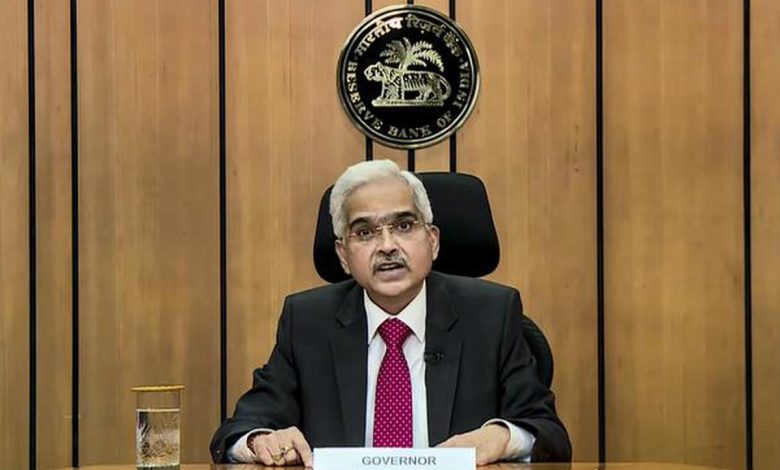RBI Increases UPI Transaction Limit for Tax Payments to Rs 5 Lakh

The Reserve Bank of India (RBI) has made a significant move to simplify tax payments by increasing the UPI transaction limit from Rs 1 lakh to Rs 5 lakh per transaction. This change, announced by RBI Governor Shaktikanta Das during the third bi-monthly monetary policy meeting, is a step toward making financial transactions more seamless and accessible for the common man.
Why the Increase in UPI Transaction Limit Matters
The Unified Payments Interface (UPI) has revolutionized the way we handle money. With just a smartphone, we can transfer funds, pay bills, and now, even settle our taxes. The decision to raise the UPI transaction limit to Rs 5 lakh is more than just a number—it’s a reflection of India’s growing digital economy and the trust placed in UPI as a secure and reliable platform for high-value transactions.
A Closer Look at the UPI System
What is UPI?
Unified Payments Interface, commonly known as UPI, is a real-time payment system developed by the National Payments Corporation of India (NPCI). It allows users to link multiple bank accounts to a single mobile application, enabling the transfer of funds between different banks instantly. UPI has gained immense popularity due to its ease of use, security features, and the ability to make payments without sharing bank details.
The Evolution of UPI
Since its inception in 2016, UPI has seen exponential growth. Initially designed for low-value transactions, the platform’s success has led to its adoption for a wide range of financial activities, including bill payments, retail purchases, and now, tax payments. The RBI’s decision to increase the transaction limit is a testament to the platform’s reliability and the trust users have in its security.
Impact of the Increased Limit on Tax Payments
Ease of Tax Payments
For many taxpayers, the increased limit simplifies the process of paying taxes. No longer constrained by a Rs 1 lakh limit, individuals and businesses can now make larger payments in a single transaction, reducing the time and effort required to fulfill tax obligations.
Enhanced Convenience
The convenience factor cannot be overstated. With the new limit, taxpayers can avoid the hassle of multiple transactions, making the payment process smoother and more efficient. This is particularly beneficial for those who have to make substantial tax payments, such as self-employed professionals and businesses.
Broader Implications for the Digital Economy
Boost to Digital Transactions
The RBI’s move is expected to further boost digital transactions in the country. By increasing the transaction limit, the RBI is encouraging more people to use UPI for significant financial activities, thereby pushing India closer to becoming a cashless economy.
Increased Trust in Digital Payments
Raising the transaction limit also signals increased trust in the security and reliability of digital payment platforms. This trust is crucial as India continues to expand its digital infrastructure and encourages more citizens to embrace online payments.
Public Repository for Digital Lending Apps
In addition to the UPI limit increase, Governor Das also proposed the establishment of a public repository for digital lending apps. This repository aims to monitor and curb unauthorized players in the market, ensuring that consumers are protected from fraudulent activities.
Why This is Important
The rise of digital lending apps has made access to credit easier, but it has also led to the proliferation of unauthorized and potentially harmful players in the market. A public repository would serve as a regulatory tool, helping to keep the digital lending space safe and trustworthy.
Concerns Over Top-Up Home Loans
Governor Das also expressed concern about the increasing disbursals of top-up home loans. These loans, which are additional borrowings over and above an existing home loan, have become more common in recent years. However, Das urged lenders to implement corrective measures to ensure that these loans do not lead to financial instability.
Understanding Top-Up Home Loans
Top-up home loans are a type of loan that allows existing home loan borrowers to borrow additional funds against their property. While these loans can be useful for funding major expenses, such as home renovations or education costs, they also come with risks. If not managed properly, top-up loans can lead to increased debt and financial strain.
The Need for Corrective Measures
The RBI’s concern over top-up home loans highlights the need for responsible lending practices. Lenders must assess borrowers’ repayment capacities carefully and avoid overburdening them with debt. Implementing corrective measures will help maintain financial stability and protect consumers from potential pitfalls.
The Future of Digital Payments in India
Continued Growth of UPI
With the increased transaction limit, UPI is set to play an even more significant role in India’s financial ecosystem. The platform’s growth is likely to continue, driven by its convenience, security, and the ongoing digital transformation of the country.
Potential for Further Innovations
As UPI evolves, we can expect to see more innovations that make digital payments even more accessible and user-friendly. The RBI’s proactive approach to enhancing the platform’s capabilities is a positive sign for the future of digital payments in India.
The Reserve Bank of India’s decision to increase the UPI transaction limit for tax payments to Rs 5 lakh is a landmark move that will have far-reaching implications for taxpayers, the digital economy, and the financial ecosystem as a whole. By making tax payments more accessible and convenient, the RBI is fostering a more inclusive and efficient financial system. Additionally, the focus on regulating digital lending apps and addressing concerns over top-up home loans demonstrates the RBI’s commitment to maintaining stability and trust in India’s rapidly evolving financial landscape.
- What is the new UPI transaction limit for tax payments? The new UPI transaction limit for tax payments is Rs 5 lakh per transaction, up from the previous limit of Rs 1 lakh.
- Why did the RBI increase the UPI transaction limit? The RBI increased the limit to make tax payments easier and more convenient for taxpayers, especially those making large payments.
- How does the increased UPI limit benefit taxpayers? The increased limit allows taxpayers to make larger payments in a single transaction, reducing the need for multiple transactions and simplifying the payment process.
- What are top-up home loans, and why is the RBI concerned? Top-up home loans are additional borrowings on an existing home loan. The RBI is concerned that these loans could lead to increased debt and financial instability if not managed responsibly.
- What is the purpose of the public repository for digital lending apps? The public repository aims to monitor and regulate digital lending apps, ensuring that unauthorized and potentially harmful players are kept out of the market.









